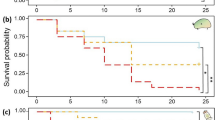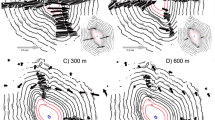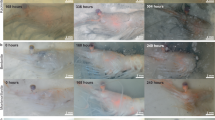Abstract
MOST of the observations on moulting in crustaceans have been confined to littoral animals kept in aquaria1. Because planktonic, deep-sea crustaceans are difficult to maintain in the laboratory there has been virtually no information available on moulting frequency in these forms. In connexion with experiments designed to determine filtering rates and the quantitative aspects of carbon metabolism in the deep-sea planktonic euphausiid shrimp, Euphausia pacifica2, observations were made on the moults and moulting frequency of this animal.
This is a preview of subscription content, access via your institution
Access options
Subscribe to this journal
Receive 51 print issues and online access
$199.00 per year
only $3.90 per issue
Buy this article
- Purchase on SpringerLink
- Instant access to full article PDF
Prices may be subject to local taxes which are calculated during checkout
Similar content being viewed by others
References
Kurata, H., Bull. Hokkaido Reg. Fish. Res. Lab., No. 24 (1962).
Lasker, R., Science, 131, 1098 (1960).
Brinton, E., Bull. Scripps Inst. Oceanog., 8, 51 (1962).
Parsons, T. R., and Strickland, J. D. H., Science, 136, 313 (1962).
Author information
Authors and Affiliations
Rights and permissions
About this article
Cite this article
LASKER, R. Moulting Frequency of a Deep-sea Crustacean, Euphausia pacifica. Nature 203, 96 (1964). https://doi.org/10.1038/203096a0
Published:
Issue date:
DOI: https://doi.org/10.1038/203096a0
This article is cited by
-
Effect of temperature on the molting, growth and maturation of the antarctic krill Euphausia superba (Crustacea: Euphausiacea) under laboratory conditions
Marine Biology (1982)
-
Production of the euphausiid Nyctiphanes australis in Storm Bay, south-eastern Tasmania
Marine Biology (1982)
-
Continuous plankton records: The occurrence of apostome ciliates (Protozoa) on Euphausiacea in the North Atlantic Ocean and North Sea
Marine Biology (1978)
-
Trace elements in zooplankton particulate products
Nature (1977)
-
Observations sur le développement larvaire de Nyctiphanes couchii (Crustacea: Euphausiacea) au laboratoire
Marine Biology (1973)



